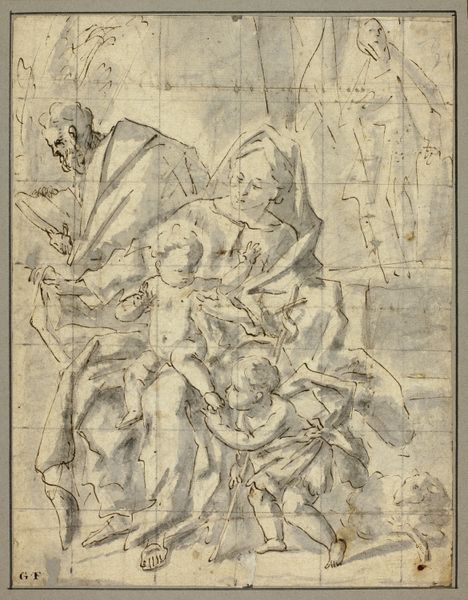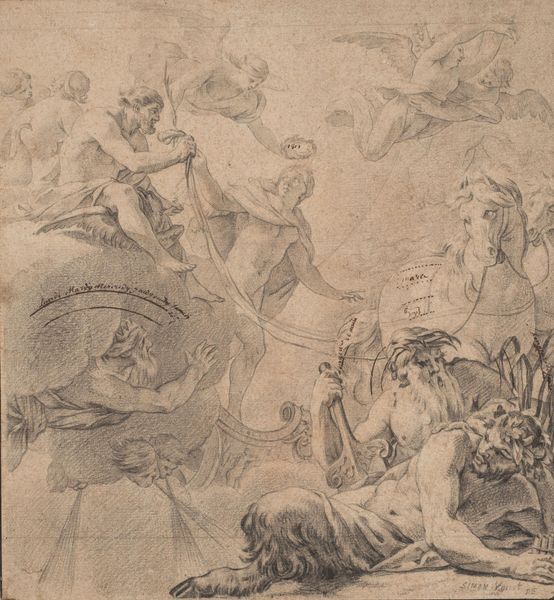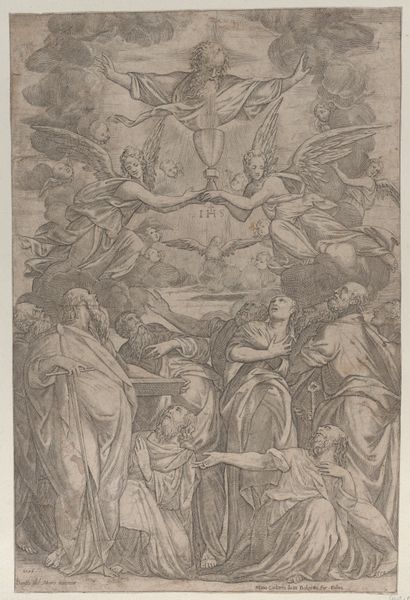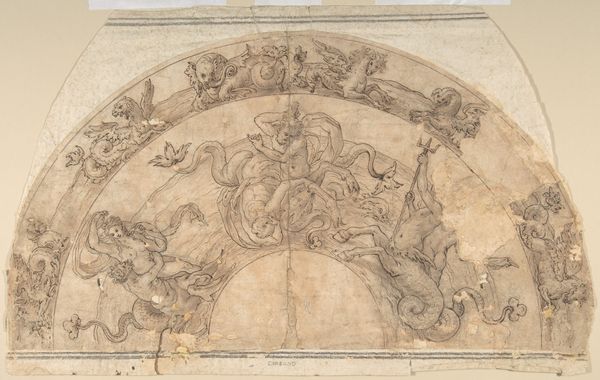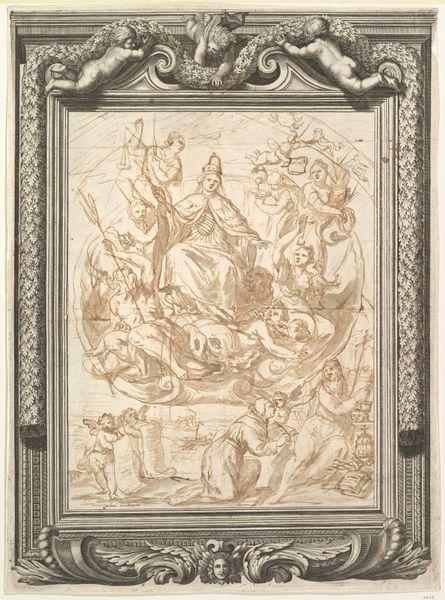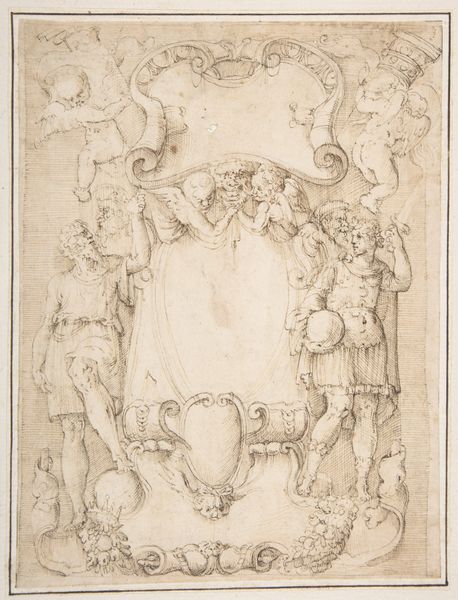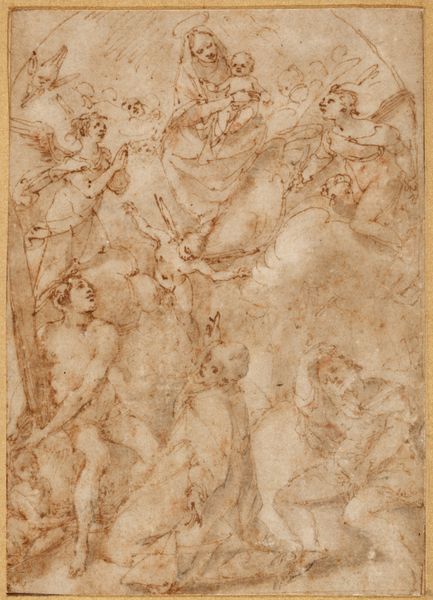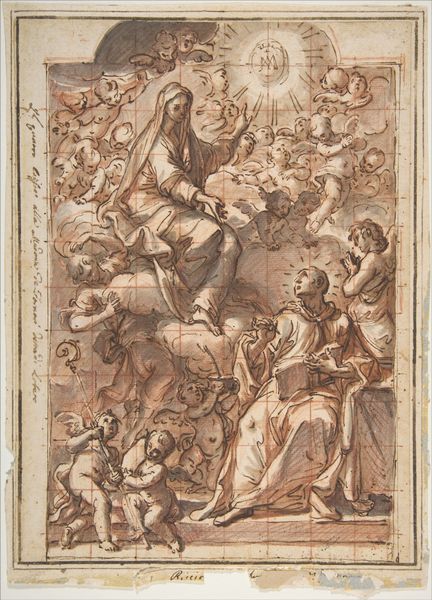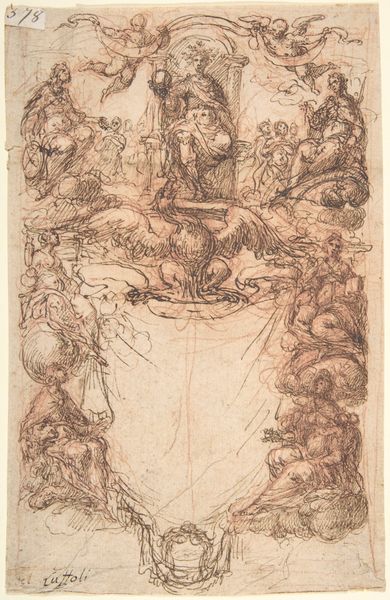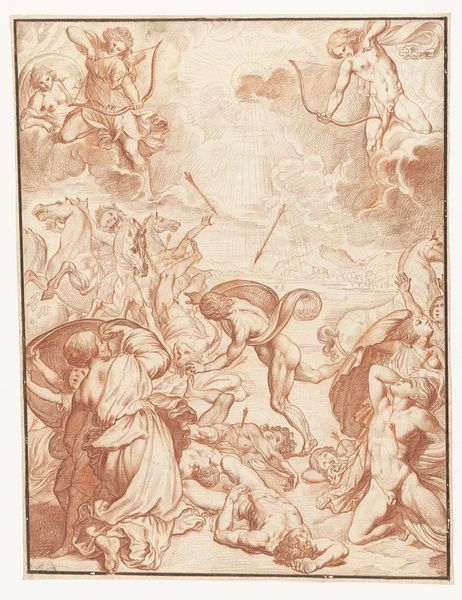
drawing, print, paper, ink, charcoal
#
drawing
# print
#
charcoal drawing
#
figuration
#
paper
#
11_renaissance
#
ink
#
charcoal
Dimensions: 289 × 230 mm
Copyright: Public Domain
Editor: This drawing, "Assumption of the Virgin," of indeterminate date, rendered anonymously using ink and charcoal, captures a religious scene, full of implied drama. What strikes me is the upward motion—the gazes and gestures all point upwards. What do you see in this piece? Curator: The upward movement is crucial. It’s not just about piety; it reflects the powerful role the Church played in directing not only faith, but also artistic production and social hierarchies. The 'Assumption' became a popular subject during the Renaissance and Baroque periods. Who commissioned it? Where might it have been displayed, originally? These are important questions. Editor: Good point. How might the commission influence its presentation? Curator: Religious art wasn’t just about devotion, it was a visual assertion of power and dogma. Think about the location – in a church, a chapel? The drawing could be a preparatory sketch for a painting, altarpiece or a print. Those mourning, gesturing figures create emotional engagement but also subtly reinforce Church doctrine regarding Mary's unique status. Note their gestures of anguish and amazement. Consider how the artist compels the viewer to also adopt such gestures, aligning themselves to the Church. Editor: So, it's about subtly guiding the audience into specific emotional and spiritual positions? Curator: Exactly. The composition itself acts as propaganda, designed to reinforce belief and subtly assert control through emotional manipulation and visual spectacle. Art was never neutral, especially not religious art. It had a function, often serving those in power. Editor: It makes you consider how artists operated within that system. I hadn't considered it in such a context before! Curator: Thinking about art's social role challenges us to question whose stories are being told and why. That kind of analysis pushes us to confront the structures that still influence the art world today.
Comments
No comments
Be the first to comment and join the conversation on the ultimate creative platform.
